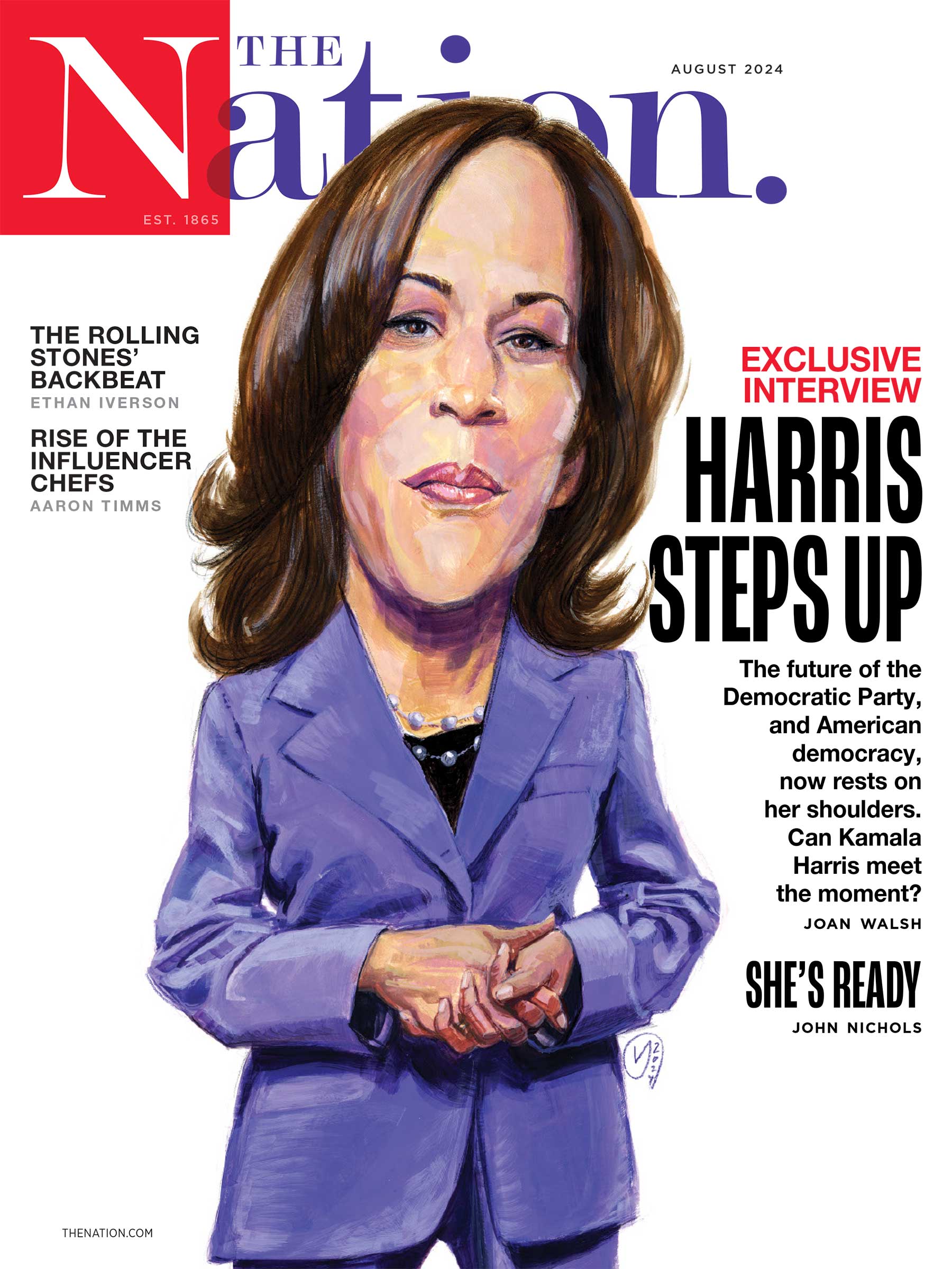Politics
/
August 6, 2024
Vice President Harris’s running mate is a heartland governor who has championed working-class Minnesotans. It’s a departure from the party’s long slide into Beltway elitism.

Minnesota Governor Tim Walz
(Tom Williams/CQ Roll Call via AP Images)
By naming Minnesota Gov. Tim Walz as her running mate, Democratic presidential candidate Kamala Harris has begun to address a serious deficit in party leadership. After a generation or more of recruiting Ivy League-educated coastal knowledge professionals to lead the party, Democrats have cast aside that dead-end class geography in favor of a potential vice president who logged decades as a union member after graduating from the Minnesota State Colleges and Universities system.
It’s true that Joe Biden was educated at the University of Delaware, but it’s also true that Biden dutifully went on to law school at Syracuse University before launching his political career and tapping into Delaware’s business establishment. Walz, surprisingly, is the first Democratic presidential candidate in half a century not to have attended law school, dating back to Naval Academy physicist Jimmy Carter’s 1976 run. The social studies teacher and longtime high school principal is also the first former longtime union member to run for president since former Screen Actors Guild president Ronald Reagan’s 1980 campaign. (Technically, Reagan’s vice president and eventual successor, George H. W. Bush, logged a weeks-long stint as a member of the United Steelworkers during his oil-industry apprenticeship, but it was a footnote to his subsequent career as a patrician boss.)
As we assessed the presidential prospects in 2019, veteran campaign reporter Walter Shapiro referred with dismay to the Democrats’ emergence as an “Advanced Placement” party, a development that paralleled the broader collapse of union organizing in the private-sector workforce and the party’s embrace of global free-trade policies at the dawn of the Internet age. While the Democratic Leadership Council worked doggedly to remake the party’s image as “pro-business,” the party’s candidates parroted a fatalistic vision of the inevitable marginalization of the working class as information-age capitalism dominated the globe. During the 1992 primary cycle, candidate Bill Clinton earned praise from pundits for empathizing with the plight of an unemployed worker in New Hampshire by proclaiming, “I understand your pain,” but once in office, Clinton continued to inflict all manner of pain on American workers, from passing the North American Free Trade Agreement to a new set of corporate-friendly deals under the General Agreement on Tariffs and Trade to an executive order extending most-favored-nation status to China in America’s new trade regime.
I can imagine Walter, who worked with me at The New Republicand who died just as Joe Biden was about to drop his reelection bid, greeting the news of Walz’s selection with his trademark mischievous grin; Walter was a New York transplant to Michigan who mounted a quixotic campaign as an anti-war candidate for Congress in the 1960s. That experience gave him firsthand insight into how political figures can come across as abrasive know-it-alls without any real appreciation for the struggles of the constituencies they seek to represent.
After a decade of apparent concern about the party’s ability to connect with members of the white working class in the heartland, Democrats can now point to a leader who knows something about the day-to-day struggles of that community and has parlayed that knowledge into surprising political success. As Nation collaborator and author of the Ettingementum As Josh Cohen has written, Walz has been re-elected four times to his seat in Minnesota’s traditionally Republican 1st Congressional District in a political environment increasingly hostile to Democratic candidates for the House:
He survived the 2010 Republican landslide by a five-point margin that, impressively, still exceeded Obama’s 2008 margin in the district. He would win by 15 points in 2012, while Obama won his district by just one point, and he would survive the 2014 red wave, winning by nine points. But his most impressive victory of all may have come in 2016, when he survived a giant 17-point swing to the right in his district to retain his seat. Each of those performances [was] stellar, and they paint a portrait of a politician who, at least for a time, had a very real appeal in a working-class district that most other Democrats couldn’t even come close to.
It’s worth noting that Walz didn’t achieve all this on the basis of charisma and personal vibes; before his first run for Congress in 2006, he signed up for Camp Wellstone, the political training operation run by the children of the late Minnesota Democratic Sen. Paul Wellstone to support the legacy of the senator and his wife, Shelia. In Congress, Walz, the highest-ranking enlisted soldier to win a House seat, became known as a successful veterans advocate, including opposing the escalation of the Iraq War and championing health care reform. Significantly, he voted against the Troubled Assets Recovery Program of 2008 in the wake of that year’s financial collapse. His service on both the Veterans Affairs and Agriculture Committees alike showed his focus on constituent services, as opposed to the sexier concerns of his coastal peers in the Democratic caucus.
Current problem

Since being elected governor in 2018, Walz has also focused on basic quality of life and income support as the foundation of his administration. With a narrow one-vote majority in the state legislature, Walz was able to enact a series of sweeping, universalist measures last year, ranging from reproductive rights protections to voting rights protections to historic climate initiatives to the state’s largest-ever education budget increase, including a free school lunch program. Nor, contrary to long-standing punditry lore, has Walz’s strong set of social democratic successes come at the expense of members of vulnerable identity groups. Walz launched a student group that showed affinity for LGBTQ students while he was a football coach at Mankato High School and signed an executive order supporting gender-neutral care in the state.
Mainstream pundits are already lamenting the choice of Vice President Harris as a sop to the Democrats’ left-leaning base at the expense of the hard realist calculation of nailing the state of Pennsylvania, where Walz’s main rival, Josh Shapiro, is a popular governor. Yet this is typical zero-sum myopia of the electoral map, dating back to the party’s fateful rejection of former DNC Chairman Howard Dean’s 50-state strategy at the time Walz was launching his political career. The current momentum of the movement behind Harris’s campaign is a prime opportunity for Democrats to expand the party’s base, rather than double down on the current configuration of partisan sympathies and fist-pump their way through another election cycle. Dean’s idea at the time was to try to be competitive in every district and state, no matter how red their previous votes were: That way, he argued, the party would both broaden its national appeal and cultivate a strong local talent pool in districts that were slipping away. Rahm Emmanuel, then running the Democratic Congressional Campaign Committee, took the standard DLC and neoliberal party line and argued that the party should prioritize investments in races where it had an immediate chance of winning. Emmanuel prevailed, and Dean’s proposal was shelved. Yet studies of the Democratic Party’s competitiveness had it adopted the 50-state strategy suggest a radically different version of the electoral map, one in which the overlapping disasters of the Tea Party and the MAGA movement would have been significantly reduced.
The nomination of Tim Walz alone won’t reverse this dire history, of course. But it’s still a long-overdue course correction, and it speaks well of Vice President Harris that she summoned the stubborn political realism of a party in terminal denial of the elite to undertake it.
NOTE: This article has been corrected to include reference to President George H. W. Bush’s brief membership in the United Steelworkers.
Can we count on you?
In the upcoming election, the fate of our democracy and basic civil rights are at stake. The conservative architects of Project 2025 are planning to institutionalize Donald Trump’s authoritarian vision at every level of government if he wins.
We have already witnessed events that fill us with both terror and cautious optimism, in all of this, The nation has been a bulwark against misinformation and a champion of bold, principled perspectives. Our dedicated writers sat down with Kamala Harris and Bernie Sanders for interviews, parsed J.D. Vance’s shallow right-wing populist appeals, and discussed the path to a Democratic victory in November.
Stories like these and the one you just read are vital at this critical moment in our country’s history. Now more than ever, we need independent, lucid, and deeply researched journalism to make sense of headlines and separate fact from fiction. Donate today and join our 160-year legacy of speaking truth to power and elevating the voices of grassroots advocates.
Throughout 2024, and in what will likely be the defining election of our lifetimes, we need your support to continue publishing the eye-opening journalism you rely on.
Thank you,
The editors of The nation
Chris Lehman
Chris Lehmann is the head of the DC office for The nation and a contributing editor at The Disconcerting. Previously he was director of THE Shocking AND The New Republicand is the author, more recently, of The Cult of Money: Capitalism, Christianity, and the Demise of the American Dream (Melville House, 2016).





